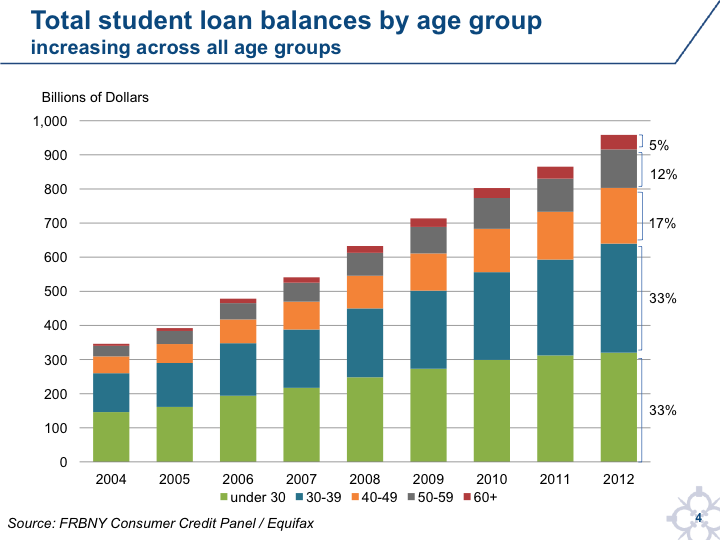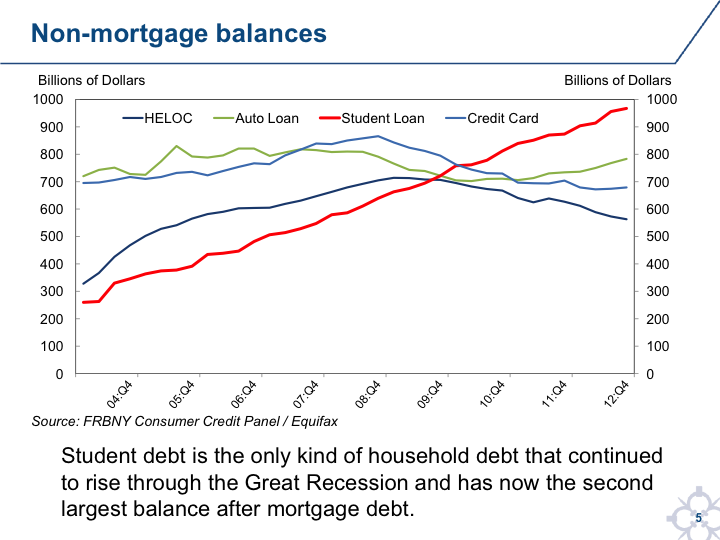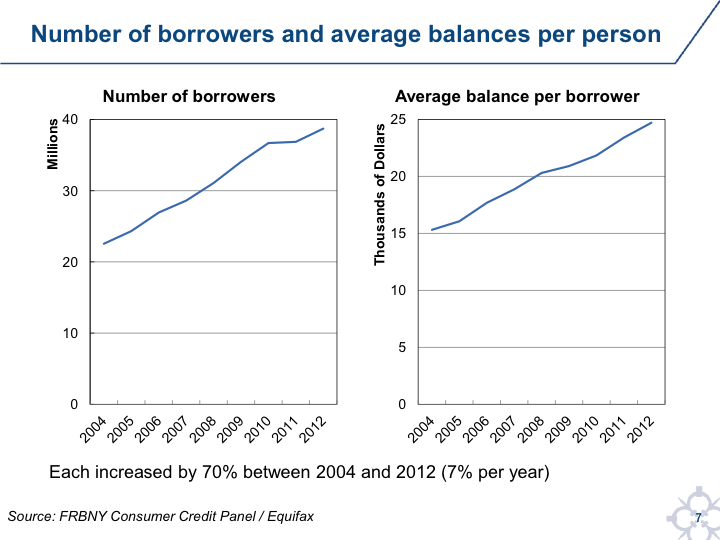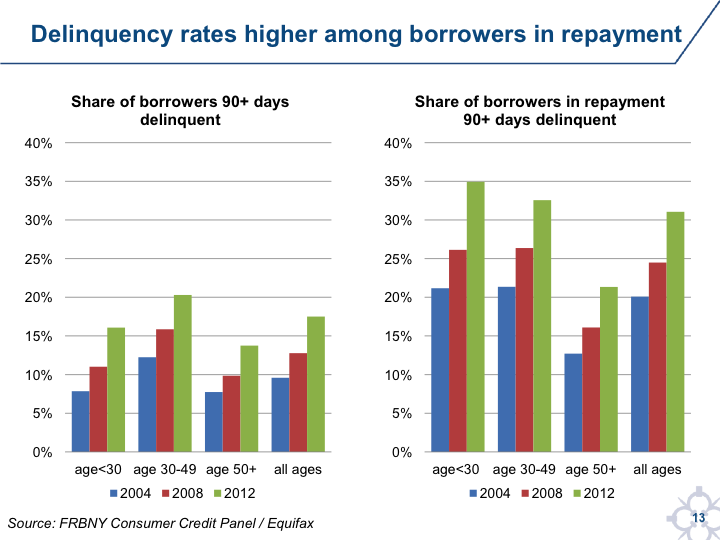The explosion of the student loan bubble could lead to the next financial crisis in the United States, says a new federal report -which highlights the growing problem in these alarming new charts.
As of 2012, about $1 trillion was tied up in student loans - more than the total amount of credit card debt in the nation, the report by the Federal Reserve Bank of New York said.
The majority of the student loans are backed by the federal government, which means the public bears most of the risk associated with student loans.
And those loans are looking riskier by the day.
That's because college tuition becomes more expensive every year, median income levels continue to fall, and hiring of young graduates remains tepid, especially for those with little experience.
No longer does a bachelor's degree guarantee a secure job, enough income to buy a house or the opportunity to advance in a career.
These days, a degree is often associated with debt, unemployment and the need to get another degree in order to get a good job.
Even while the costs of higher education continue to rise and more students rely on loans to pay for school, unemployment levels for new grads remain near all-time highs. In fact, half of Americans under 25 with a college degree are either unemployed or working in a job for which they're overqualified.
And student debt threatens to hamper economic growth, as consumers with high levels of debt will spend less and put off buying a house or making other large purchases. That takes out of the housing market many of the traditional new homebuyers - young college graduates.
These five charts highlight the growing student loan debt among more and more young Americans.
The Student Loan Bubble in 5 Charts
1) The amount of student debt has almost tripled since 2004 and now approaches $1 trillion.

2) Since 2004, Americans have cut back on non-mortgage debt including home equity lines of credit, auto loans and credit cards, while increasing student loan debt.

3) The average amount of debt students carry is up 70% since 2004, as is the average debt per student. There are almost 40 million people with student debts and the average debt per person is around $25,000.

4) Economic hardships have caused delinquencies to rise among all age groups. More than 30% of those with student loans were more than 90 days past due on payments in 2012. That's almost double the proportion 90 days past due in 2004.

5) The proportion of 25-year-olds with student debt has increased from just over 25% in 2004 to more than 40% in 2012.

Related Articles and News:
- Money Morning:
Should You Be Worried About a Bond Market Crash? - New York Federal Reserve:
Household Debt and Credit: Student Debt
[epom]


